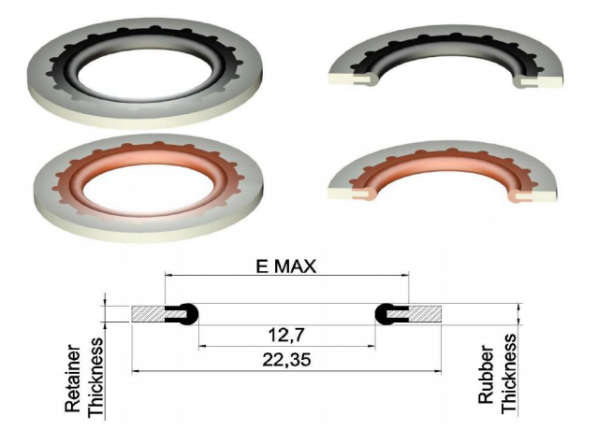The Importance of Oil Seal Maintenance in Steering Rack Performance
Understanding the Importance of Oil Seals in Steering Racks
The automotive industry has seen significant advancements over the years, with continuous improvements in technology and design being implemented to enhance vehicle performance and longevity. One critical component often overlooked by car owners and even some mechanics is the oil seal in steering racks. This tiny yet crucial element plays a significant role in the vehicle's steering system, and understanding its function can help in maintaining the overall health of a vehicle.
What is a Steering Rack?
The steering rack is a vital component of a vehicle's steering mechanism. It converts the rotational movement of the steering wheel into linear motion, allowing the wheels to turn. The rack and pinion system is one of the most common types used in modern vehicles. Tucked away beneath the vehicle's front end, the steering rack works seamlessly in conjunction with other components such as the power steering pump, tie rods, and the universal joints, ensuring smooth and responsive steering.
Function of Oil Seals
Oil seals, often referred to as shaft seals, are designed to prevent the leakage of lubricants and other fluids within mechanical systems. In the case of steering racks, oil seals serve a dual purpose. Firstly, they help retain the oil needed for lubrication within the steering rack assembly. This oil ensures that the moving parts within the rack operate smoothly, reducing friction and wear. Secondly, they prevent contaminants such as dirt, dust, and water from entering the steering rack, which could lead to premature wear and failure.
Consequences of Faulty Oil Seals
oil seal steering rack

Over time, oil seals can degrade due to various factors, including exposure to harsh environmental conditions, heat, and general wear and tear. A compromised oil seal can lead to several issues. One of the most common symptoms is the presence of steering fluid leaks. If the oil seal fails, steering fluid can escape, leading to a drop in power steering fluid levels, which can impair steering performance. Drivers may notice increased difficulty in steering, a whiny noise when turning the wheel, or fluid spots on their driveway.
Besides compromising the performance of the vehicle, failing to address issues with oil seals can result in more significant damages to the steering rack and associated components. A lack of lubrication can cause the steering rack to wear down more quickly, leading to expensive repairs or replacements.
Maintenance and Replacement
Regular inspections and maintenance of the steering system can help prevent issues related to oil seals. Vehicle owners should periodically check the steering fluid levels and look for any signs of leaks. It's also advisable to have the steering system inspected during routine vehicle maintenance services.
If a faulty oil seal is identified, timely replacement is crucial. While it may seem like a minor issue, addressing it promptly can save vehicle owners from more extensive repairs down the line. When replacing oil seals, it is important to use high-quality seals designed specifically for the vehicle's make and model to ensure a proper fit and function.
Conclusion
In the grand scheme of automotive maintenance, oil seals in steering racks may seem like a small component, but their importance cannot be understated. They play a crucial role in ensuring that the steering system operates smoothly, avoiding potential failures that could compromise both safety and performance. By understanding the function of oil seals and actively maintaining the steering system, vehicle owners can safeguard against costly repairs and enjoy a smoother driving experience. Regular attention to such details can extend the life of the vehicle and enhance overall reliability on the road.
-
Simplifying Oil Changes: A Comprehensive Guide to Oil Drain Plugs and Their Variants
News Aug.04,2025
-
Mastering Oil Drain Maintenance: Solutions for Stripped, Worn, and Upgraded Oil Plugs
News Aug.04,2025
-
Fixing Oil Pan Plug Issues: Leaks, Stripped Nuts, and the Right Replacement Solutions
News Aug.04,2025
-
Everything You Need to Know About Oil Drain Plugs: Sizes, Fixes, and Upgrades
News Aug.04,2025
-
Choosing the Right Oil Drain Plug: A Guide to Sizes, Materials, and Drain Innovations
News Aug.04,2025
-
A Complete Guide to Automotive Drain Plugs: Types, Problems, and Innovative Solutions
News Aug.04,2025
-
The Ultimate Guide to Car Repair Kits: Tools and Essentials Every Driver Should Own
News Aug.01,2025
Products categories















